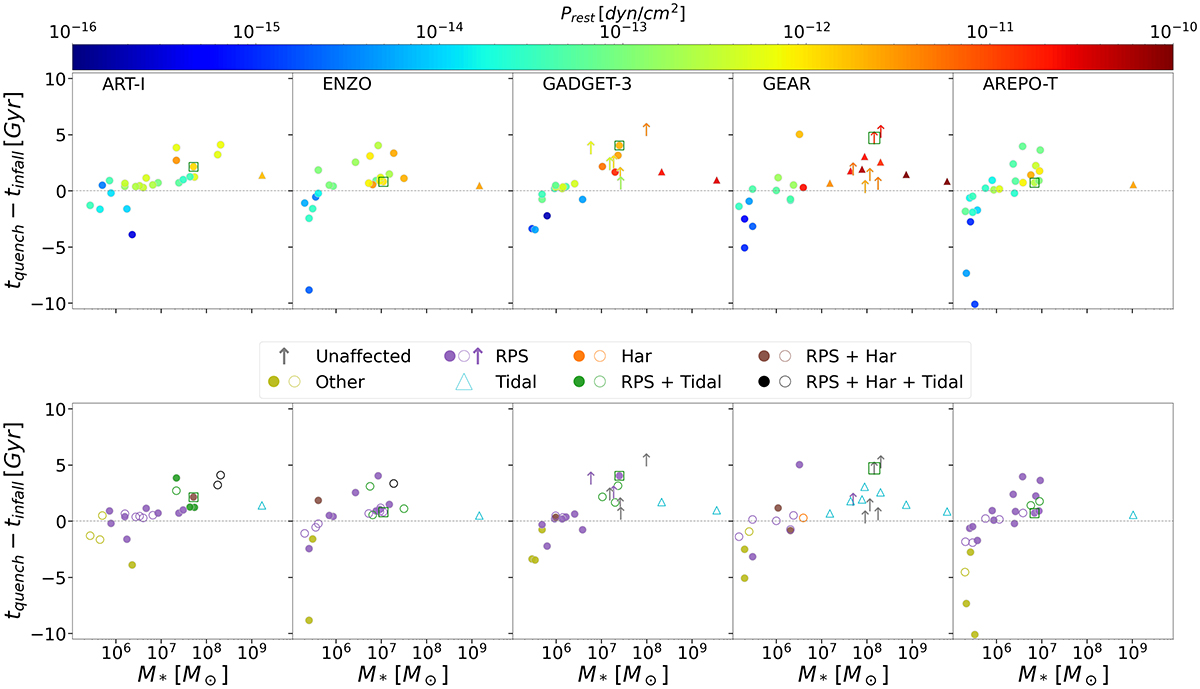Fig. 12.

Download original image
Same as Figure 8 but the color bars colored by the maximum restoring force during infall (top) and the quenching mechanism affecting each satellite (bottom). Whether a mechanism contributes to quenching is determined by following the process described in Section 3.4.3 and illustrated in Figure 11. We note that strangulation is found to be efficient for all satellites due to the virial-shocked halo; however, it is excluded here for clarity and we focus on the stripping mechanisms. If a satellite was quenched before any of the mechanisms became efficient, it is represented in olive color and labeled as quenched by other mechanisms, as the ones enumerated in Section 3.3. Satellites not affected by any stripping mechanism and still star-forming are shown in gray and labeled as unaffected. The open green square enclosing a single data marker in each panel indicates the same satellite across the different models and we compare its evolution in Section 3.4.2 and in Figures 9 and 10.
Current usage metrics show cumulative count of Article Views (full-text article views including HTML views, PDF and ePub downloads, according to the available data) and Abstracts Views on Vision4Press platform.
Data correspond to usage on the plateform after 2015. The current usage metrics is available 48-96 hours after online publication and is updated daily on week days.
Initial download of the metrics may take a while.


